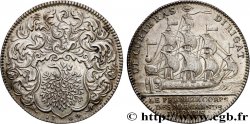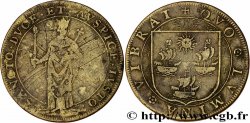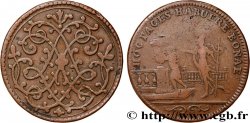fjt_129195 - CORPORATIONS MARCHANDS TEINTURIERS, émission de 1698 n.d.
недоступный.
Товар уже продан в нашем интернет-магазине (2013)
Цена: : 280.00 €
Товар уже продан в нашем интернет-магазине (2013)
Цена: : 280.00 €
Тип MARCHANDS TEINTURIERS, émission de 1698
Дата: n.d.
Металл: silver
Диаметр: 28,5 mm
Ориентация осей монеты: 6 h.
Вес: 6,09 g.
Редкость: R2
Ссылки в каталоге: :
Лицевая сторона
Аверс: легенда: LOVIS. LE. GRAND. - PROTECTEVR. DES. ARTS.
Аверс: описание: Buste à droite de Louis XIV, type Guéant Prieur 444H.
Обратная сторона
Реверс: легенда: DE. TE. LUX. DE. LUCE. COLORES. ; À L'EXERGUE : MARCHS. TEINTVS. DE. BON. TEINT..
Реверс: Описание: Le soleil faisant pousser de fleurs et des plantes tinctoriales.
Реверс: перевод: De toi la lumière, de la lumière les couleurs.
Комментарий
Ce buste est très rare.
Les légendes d’avers et de revers sont du plus grand intérêt. Ce jeton fait partie de la série des Corporations
Les métiers de la teinture se divisent sous l'Ancien Régime en trois catégories : les teinturiers de grand et bon teint, les teinturiers de petit teint et ceux de soie, laine et fil. Les premiers, dont il est question ici, travaillent les belles étoffes avec les teintures les plus estimées, comme l'inde et la fleurée. Les seconds usent de teintures médiocres, principalement celle dite "noir de chaudière ou moulée".
This bust is very rare. The obverse and reverse legends are of the greatest interest. This token is part of the series of Corporations. The dyeing trades were divided under the Ancien Régime into three categories: dyers of grand and bon teint, dyers of petit teint and those of silk, wool and thread. The former, who are the subject here, work the beautiful fabrics with the most esteemed dyes, such as inde and fleurée. The latter use mediocre dyes, mainly that known as \\\"boiler black or molded\\\"
Les légendes d’avers et de revers sont du plus grand intérêt. Ce jeton fait partie de la série des Corporations
Les métiers de la teinture se divisent sous l'Ancien Régime en trois catégories : les teinturiers de grand et bon teint, les teinturiers de petit teint et ceux de soie, laine et fil. Les premiers, dont il est question ici, travaillent les belles étoffes avec les teintures les plus estimées, comme l'inde et la fleurée. Les seconds usent de teintures médiocres, principalement celle dite "noir de chaudière ou moulée".
This bust is very rare. The obverse and reverse legends are of the greatest interest. This token is part of the series of Corporations. The dyeing trades were divided under the Ancien Régime into three categories: dyers of grand and bon teint, dyers of petit teint and those of silk, wool and thread. The former, who are the subject here, work the beautiful fabrics with the most esteemed dyes, such as inde and fleurée. The latter use mediocre dyes, mainly that known as \\\"boiler black or molded\\\"








 Cообщить об ошибке
Cообщить об ошибке Распечатать страницу
Распечатать страницу Отправить мой выбор
Отправить мой выбор Задать вопрос
Задать вопрос Consign / sell
Consign / sell
 Информация
Информация









